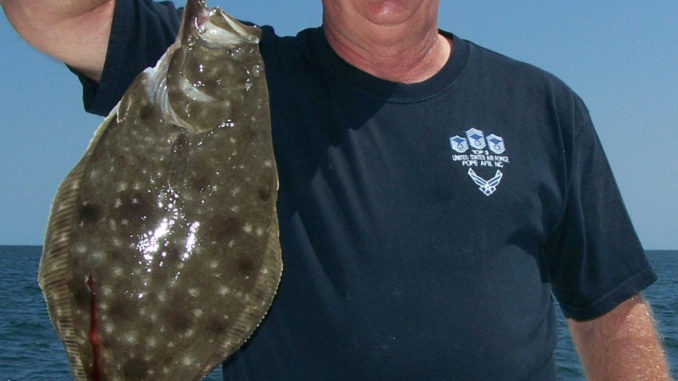
As the temperature rises, so does the number of flounder around nearshore ocean artificial reefs, hardbottom/livebottom areas and shipwrecks off North Carolina’s southern coast.
Some artificial reefs, like Yaupon Reef (AR 425) off 0ak Island, are known as flounder havens. Their locations are available on N.C. Division of Marine Fisheries’ website, www.ncdmf.net. Some of the other spots are well known, others are approximately located on nautical charts, and many are secret or semi-secret locations only occasionally shared with family and fishing buddies.
Eleven artificial reefs are within 5 miles of the beach between Rich’s Inlet and the South Carolina state line. A conservative guess would be that 50 shipwrecks are in this same section of ocean, and hundreds of small sections where rocky or live growth pokes through the sand or mud on the bottom. The bottom line is, an abundance of structure is available, and much of it attracts flatfish. Flounder numbers are usually highest in July and August.
Fishermen target flounder around this kind of structure in two different ways. The oldest is by dropping live baits to the bottom and waiting for flounder to find them. The newer method is vertical jigging, which has become popular in the past 20 years or so and is surprisingly productive at times.
Live baits fished in and adjacent to the structure produce flounder, but also result in a lot of lost rigs and fish. A Carolina rig made with 30-pound monofilament or flourocarbon helps prevent this. Most guides suggest keeping the leader short to prevent the bait from hiding in the structure to avoid being eaten. Flounder must turn live baits to swallow them headfirst, and they are sensitive to pressure on the line while doing this. Setting the hook too early or waiting too long can both result in missed fish.
The primary method for jigging is to work the lure vertically so it doesn’t hang up. However, if you don’t occasionally get hung, you probably aren’t fishing deep enough in the structure. The preferred lure is a 2- to 4-ounce bucktail with a trailer that can be a strip of natural bait or a soft-plastic strip, and many fishermen prefer a 4-inch, scented soft-plastic lure. The big plus of jigging is that when they are felt, the hook can be set immediately.




Be the first to comment